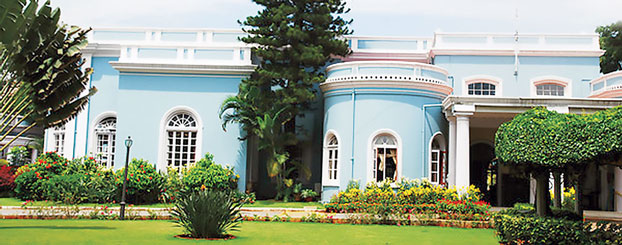
About twenty years ago, during an idle conversation on a flight, I asked a newspaper baron why he thought Indians held no grudges against the British although they had left India destitute. His response, given after a long pause, took me completely by surprise.

“We understand each other at a subliminal level,” he said. “Culturally, we Indians love to exclude each other from groups to which we belong and that is something the British also do to perfection.”
He then went on to explain the different devices of exclusion Indian and British societies had devised. Caste and clubs, he said, stood out.
Caste I knew about but clubs? Apart from going to play tennis at the local civil servants club when I was about 14, I had no idea what these things were.
But I have managed to visit a few over the years and have invariably been struck by how difficult it is to become a member of one. They have long waiting lists, charge the earth for membership, and by the time you are lucky enough to get it, you have one foot in the grave.
They also have idiosyncratic rules. Thanks to them, my wife was once asked to leave the walking track, because she was not wearing a coat! Many don’t let you bring your own alcohol and if you do you have to pay a fee before you can drink it. Some of these rules may have made sense 200 years ago, but in some perverse notion of nostalgia, are still in place.
Most of these clubs serve horrible food, perhaps because the members, having paid the ridiculously exorbitant entrance fee, can only afford very cheaply catered food! Until a few years ago, the waiters used to be doddering old men who had been in service since the East India Company first arrived in India. These old men looked down on all those who had not been members since the time of Robert Clive. Many of these club servants used to lend money to the members, although the practice was strictly forbidden.
Privilege without pomp
Yet, even after knowing all this, people are queuing up for membership and are willing to pay a fortune for the privilege because that’s what clubs are mainly selling: the idea of privilege, the ability to say, “Shall we meet at the Gym/Club/Institute?” If the other person is not a member, he/she is shown his/her proper place. “I am better than you” is what the member is saying to the non-member.
India didn’t have clubs till the British came. By the time they left, there were over 500 in existence. In most of them, dogs and Indians were not allowed. This practice was not very different from upper caste Indians not allowing dalits into temples. Just as with temples, the rule about the dogs could be relaxed in some clubs but never about the Indians. It was only in the 20th century that this changed.
The British badly needed a place where they could go in the evenings and meet other Brits to drink and gamble. Clubs in their early days were also places where other types of ‘immoralities’ could be initiated. Women were generally not allowed until the late 19th century. But by then, there were over 20,000 of them living in India and could not be excluded. Even then, they could only come as guests; and not become members.
Modern clubs
The post-1991 economic boom has seen the mushrooming of a different type of clubs. You gain entry here not by status or caste or colour or employment. Anyone who can pay the membership entrance fee can become a member. Even 5-star hotels have started exclusive clubs where they charge an arm and a leg for entry. But as long as you have the money, it is okay. All old presidency towns had two types of clubs then: one for those employed by the government and one for the rest.
The fee in these private clubs usually starts at about Rs 2 lakh and go up, in the case of some exclusive golf and polo clubs, to Rs 1 crore.
Sports clubs are common. Cricket clubs abound and the best known amongst them is the Cricket Club of India at the Brabourne Stadium, Mumbai. Kolkata and Chennai have their own as well. But these are the upmarket clubs. There are a whole host of downmarket ones as well, usually for sports like volleyball and kabaddi. Entry to these is based on a single criterion; an interest in the sport or the ability to play it. Entry fee is low, may be as little as Rs 1,000.
Women, too, now have their exclusive clubs where men are permitted only as guests. The Indian Women’s Press Corps in Delhi is one such, and is housed in an old bungalow in Lutyen’s Delhi. And of course there is the main Press Club in Delhi which is also housed in an ancient building that used to be a stable or something.
Finally, lest you think that my grapes are sour, let me assure you that they are not. I do belong to a few clubs. Entry to them is highly regulated. One of the clubs to which I belong even denied entry to Laloo Prasad Yadav, who may as well have commented what Groucho Marx said once: “Any club that will have me is not worth becoming a member of.”





